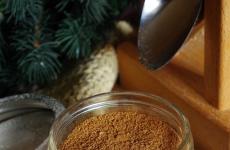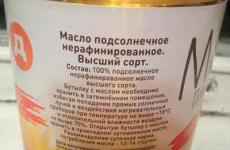Animal exoskeleton. The skeleton of insects is outside, not inside their bodies. What is the external skeleton
When the word "skeleton" is heard, we usually immediately imagine a bare skull and spine, connected by many different bones. It really is, but not in all organisms on our planet. Many animals have an external skeleton. What it looks like and what functions it performs, you will learn further.
What is the external skeleton?
Muscles, ligaments and the skeleton together form the musculoskeletal system of the body. Thanks to them, everything happens, even the smallest movements in terms of effort. The skeleton in this system plays a passive role. This is a frame that serves as a support for the muscles and protection for the internal organs.
It happens:
- interior;
- external;
- hydrostatic.
The least common hydrostatic skeleton. It is devoid of solid parts and is characteristic only of soft-bodied jellyfish, worms and sea anemones. Everyone has an internal, or endoskeleton. It consists of bones and cartilage, completely covered with body tissues.
The external skeleton is characteristic mainly of invertebrates, but may also be present in vertebrates. It does not hide inside the body, but completely or partially covers it from above. The exoskeleton consists of various organic and inorganic compounds, such as chitin, keratin, limestone, etc.
Not all organisms have only one type of "skeleton". Some species have both internal and external skeletons. Such animals include turtles and armadillos.
polyps
Polyps are one of the most "lazy" creatures on the planet. They chose to practically not move on their own, but to live, clinging to the seabed, like plants. Only sea anemones do not have a hard skeleton. In the rest, it is represented by protein (gorgonians, black corals) or lime (madrepores).
The calcareous outer skeleton is commonly referred to as coral. In its small holes are the polyps themselves, connected to each other by a membrane of living tissues. Animals form whole numerous colonies. Together, their exoskeletons form an "underwater forest" or reefs that host entire islands.
The main part of the reefs is located in the waters of Southeast Asia. The largest colony in the world is the Great Barrier Reef in Australia. It stretches for 2500 kilometers and holds more than 900 islands.
shellfish
Mollusks have one of the most beautiful and varied external skeletons. Science knows about two hundred thousand species of these animals, each of which has its own structure. The exoskeleton of most mollusks is represented by a shell. It may include aragonite or conchiolin with impurities of calcite, vaterite, calcium carbonate and calcium carbonate.
Some animals have a spiral shell, the curls of which twist in a circle (snails) or in the form of a cone (staircase epitonium). At the wide end there is a hole - the mouth. It can be narrow and wide, oval, round or in the form of a long slit.

In the cypree or the knots, each new curl overlaps the previous one, which is why the spiral is poorly distinguishable, and it seems that it does not exist at all. But the bivalves really do not have it. Their shell consists of two convex symmetrical parts that open and close like a box.
Mollusk skeletons are generally not smooth. They are covered with microscopic scales, furrows and bulges. In some species, spines, keels, ridges and plates from variations of calcium carbonate depart from the shells.
arthropods
The phylum Arthropoda includes crustaceans, insects, arachnids, and centipedes. Their body has a clear shape and is divided into segments. In this regard, the external skeleton of arthropods is very different from the integuments of corals and mollusks.
Each segment of their body is enveloped by strong cuticles (sclerites) made of chitin and other impurities, which are interconnected by elastic and flexible membranes, providing mobility to the animal.

In insects, the tough but elastic cuticle represents the outer layer of the skeleton. Below it is a layer of hypodermis and basement membranes. It consists of fat-protein complexes that do not allow the body of animals to dry out.
In crustaceans, the cuticle is more durable and impregnated with lime, which becomes more and more over time. In some species, the skeleton may be transparent and soft.
The cuticle contains pigments that give animals a variety of colors. From above, it is usually covered with scales, outgrowths and hairs (chaetoids). In some representatives, the integument is equipped with glands that secrete poison or odorous substances.
Vertebrates
Durable outer covers are also found among more developed animals. The outer one is represented by a shell. It is a reliable protection for the animal, as it is able to withstand the weight of two hundred times the weight of its owner.
The shell consists of a thick upper layer of keratin in the form of tightly fastened scutes and an inner layer of bone. From the inside, the spine and ribs are attached to them, repeating the arched shape of the shell. The part of the skeleton that covers the back is called the carapace, and the ventral shield is called the plastron. All shields on them grow independently of the others and acquire annual rings when the animal falls into a winter sleep.

The shells can have different colors and patterns, but basically their color is disguised as an external environment. Star turtles have black and bulbous scutes with yellow "stars" in the center. In the African kynyx, it is more restrained and has a solid yellow-brown color.
The skeleton of this type is a characteristic feature of arthropods. The exoskeleton (cuticle) is secreted by the epidermis; it does not contain cells and consists mainly of chitin. This is a hard outer cover of the body, which is built from articulated plates or tubular formations. The tracheae, anterior (stomodeum) and posterior (proctodeum) sections of the digestive tract are also lined with chitin. Chitin is a strong, lightweight material, but it can become hard when "tanned" proteins are incorporated into it or when calcified (especially in aquatic crustaceans). In areas of the skeleton that must remain mobile, for example, at the junction of the plates, chitin remains unchanged. This design of plates or tubes connected by flexible films provides both protection and mobility.
Arthropods are the only group of invertebrates that have jointed limbs, which consist of levers connected by a kind of hinges. These levers are driven by flexor and extensor muscles attached to the internal projections of the exoskeleton (Fig. 17.1). Because chitin is permeable to water, terrestrial arthropods such as insects could be in danger of drying out. However, this does not happen due to the epicuticle - a waxy layer that is secreted by the glandular cells of the epidermis and brought to the surface through the ducts (Fig. 4.33). Thus, the exoskeleton not only serves as a support and protection for internal organs, but also protects the body from dehydration.
For such small animals as most arthropods, the exoskeleton of hollow tubular elements serves as a very convenient support and locomotor structure; the tube can, without bending, withstand much greater loads than a dense cylinder of the same mass. However, with an increase in the size and weight of the animal, such an organization becomes less convenient - in order to maintain sufficient strength, the thickness and mass of the exoskeleton would have to increase so much that it would eventually turn out to be too heavy and bulky.
Growth occurs at molting- in insects in the juvenile stages (larvae or nymphs), and in crustaceans and in the adult state. At a certain time, the old exoskeleton is shed (molt) and a new one is exposed - soft and extensible. The animal grows before the new cuticle has hardened, thanks to its ability to stretch and increase in size, which is often accompanied by a change in shape. Eventually the new exoskeleton becomes rigid, but until then the animal is vulnerable to predators. During this period, the skeleton is not able to support the weight of the body and any kind of movement is practically impossible. For aquatic animals, this problem is not so serious, since water helps them to support their body weight, however, during the molting season, both aquatic and terrestrial animals, as a rule, hide in shelters to reduce the danger of being caught by a predator. Moulting is a process that requires a significant expenditure of energy (primarily for the construction of a new exoskeleton) and is associated with the loss of material when the old cuticle is shed.
Exoskeletons increase a person's strength, increase productivity and return lost abilities. They help the disabled, facilitate labor in industry and improve the army.
What is an exoskeleton
Literally translated from Greek, the exoskeleton is the external skeleton. An automatic design that restores lost or enhances existing body functions.
It consists of a solid frame and drives that are responsible for movement. Such systems duplicate the work of the musculoskeletal system, calculate the efforts and safety of movements.
Exoskeletons are made passive and active. The former do not increase strength and do not take on the physical load, but distribute it throughout the body. Active models have their own focus on the ground. They take on some of the burden. So the user lifts more weights - the effect of increasing strength is obtained.
The first exoskeletons

The idea of a suit that enhances abilities originated in science fiction. The principles on this topic were formulated by the Russian-American mechanical engineer Nikolai Yagn. True, things did not go beyond theory. The only embodied idea is an automatic device that supplies water to steam boilers - "The Fireman's Friend".
The first exoskeleton was made in the Pentagon. He called himself Hardiman. It was a machine with a large manipulator, in which you had to insert your hand to control. Its carrying capacity was 110 kg, but Hardiman did not bring any serious benefit. He was too big and heavy (680 kg).
Since the 1980s, promising projects have appeared. In the 1990s, production began in different countries. The costumes were still clumsy, but were getting closer to being used in real life.
Now most of the exoskeletons are made for medicine, the army or industry.
Exoskeletons for the disabled
Exo GT

Exoskeleton for rehabilitation after stroke and spinal cord injury. The Ekso GT is a pair of robotic legs with walking crutches. The firmware collects statistics on how much energy is spent on each movement of the robot, and what actions the person performs himself.
Hybrid Assistive Limb (HAL)

Available for legs (HAL 3) or arms-legs-torso (HAL 5). Helps to lift a load 5 times more than a person can. Needed for the rehabilitation of the paralyzed. The actuators of this exosuit are powered by muscle impulses. In addition to people with health problems, HAL is useful for the elderly, builders, emergency workers.
REX

Skeleton for people with leg dysfunction. It helps you walk, stand up, sit down, climb stairs, move backwards, and even moonwalk. The user controls it from the control panel and joystick.
REX can remove the complications associated with being in a wheelchair for a long time.
Phoenix

Exosuit for free walking with paralysis of the legs. Very different from the bulky models of the last decade in size and weight (12 kg). This is possible due to the use of only two drives on the hips. The knees are supported in the desired position by tension systems.
eLegs

Exoskeleton for people with paralysis or leg dysfunction. Weight - 20 kg. Suitable for a person with a height of 157-193 cm. The speed of movement is about 3 km / h.
The suit anticipates actions using tilt sensors, such as helping to get out of a wheelchair when the user leans forward and leans on crutches.
ReWalk

Bionic exosuit for paraplegic patients. It helps to stand, walk, go up the stairs. Management is carried out through the remote control in the hand.
Military exoskeletons
The ministries of defense and military research institutes of different countries have been trying since the last century to develop a lightweight, simple and durable system for soldiers.
In the Pentagon, this is done by the DARPA Advanced Development Agency, in Russia, by institutes and engineering bureaus commissioned by the Ministry of Defense. Similar projects are underway in China, Japan, Israel and European countries.
XOS 2

One of the most famous exoskeletons for the army. Its task is to increase the physical abilities of a soldier. Armor is not included in equipment.
The suit helps with logistics and assaults. It adds strength enough to carry heavy loads, destroy wooden beams and brick walls.
Talos

This is a complex suit. It has the functions of an armor and a system that increases strength. It helps to fight with equipment up to 45 kg. The suit monitors vital signs and even stops bleeding.
The composition and specific characteristics of the equipment are usually not published - Talos is shown at thematic exhibitions with a general presentation.
exohiker

This skeleton is not positioned as an army skeleton, but it is interesting for the military. Its task is to facilitate the carrying of heavy backpacks during a hike. The ExoHiker weighs 14kg but lifts a load of 70kg. On a single charge without connecting a solar battery, it travels 65 km at a speed of about 4 km / h.
Industrial exoskeletons
H-Lex

Weight lifting machine from Hyundai. It is suitable for people with limited mobility, but inconvenient due to its large size. Therefore, the main emphasis is placed on work in industry. Where you have to lift up to 60 kg.
Chairless Chair

This exochair is for those who work on their feet. It relieves tension in the muscles when you need to stay in a semi-squat for a long time, squat or stand. Convenient for work in the workshop, on the packaging line, kitchen, hairdresser. The device is flexible and mobile.
Exosuit

Designed for divers to withstand water pressure and low temperatures down to 300 meters. In fact, this is a reinforced diving suit weighing 240 kg with four engines.
MS-02 PowerLoader

Robotic suit for many tasks. The developers suggest using it in rescue operations, where you need to lift objects weighing up to 100 kg.
There are several manipulators in the system, and sensors are located in the soles of the “legs”. They analyze the load on a person in six vectors and calculate how much machine effort needs to be applied to help.
MAX Suit X

Exoskeleton for loaders. The design duplicates the musculoskeletal system, removing part of the load from it. It constantly hangs on a person in a deactivated state, but automatically recognizes the moment of starting work and turns on.
Assist Suit AWN-03

Power exoskeleton from Panasonic for warehouse workers. It is attached to the shoulders, hips and lower back. The main task is to remove the load from the spine and back muscles during the transfer of weights.
Russian exoskeletons
ExoAthlete

Russian development for the rehabilitation of patients with leg and spinal cord problems. One of the pilots and ambassadors of ExoAtlet is Paralympic wheelchair curling champion Vitaly Danilov.

Industrial exosuit from developers from Perm. According to calculations, it increases labor productivity in machine-building, construction and rescue work by 2-5 times.
ExoBelt

Passive exoskeleton from the ExoAtlant company. The project is still under development. It is expected that it will remove up to 40% of the load from the back during the transfer of weights.
The first partner of the company will be Sberbank. The exoskeleton will be tested by employees who carry bags of gold and other valuables.
Exoskeletons of the future
The industry is growing: devices are decreasing in size, functions are becoming wider. Models appear not only for medicine, industry or the army:
ARAIG

Exoskeleton controller for gamers. It is not designed to carry loads or enhance abilities. This suit immerses the user in the game reality: it changes the temperature, imitates the impact of projectiles, contact with the ground and obstacles.

A suit designed by the North Atlantic Space Agency for astronauts. It is needed to work with large weights in zero gravity.
The apparatus has four drives on the knees and hips and six joints. The developers plan to add more. The suit is suitable for working on the ISS and maintaining muscle tone in zero gravity - it sends data about astronauts to doctors on Earth.
Where to buy an exoskeleton and how much does it cost
The price of materials makes exoskeletons expensive. For example, Russian ExoAthlete costs more than 1 million rubles. Foreign-made suits are much more expensive. For example, REX P - 9.5 million rubles.
Manufacturers with lower prices are gradually appearing. So, Cyberdyne releases HAL for arms, legs and the whole torso, which can be bought from $4,200.
It is better to find out the price of devices on the websites of manufacturers, but these resources are also suitable for general information:
- TIU
The design of the exoskeleton people spied on insects. And as practice shows, the exoskeleton increases the physical abilities of a person at times. Similarly, the external skeleton works in insects. But how are the muscles attached to such a skeleton, and what protects the organs?
Despite the actual presence of a skeleton, insects belong to the class of invertebrates. The human skeleton, like many mammals, is located inside the body and includes the spine, ribs and limbs. Muscles are attached to the skeletal bones, which set it in motion. Insects are "turned inside out".
How did mosquitoes kill 52,000,000,000 people?

The bees scream as they collide with each other
Scientists recorded the buzzing of bees and found something unexpected on the recording: colliding with each other in the hive, the bees make a certain sound, something like “ah!” if translated into human. And more often this happens at night, when all the bees are "at home" and are busy with their "household chores". Listen to this funny scream!
There are giant black bees
The expedition, which took place in early 2019, brought unexpected results








